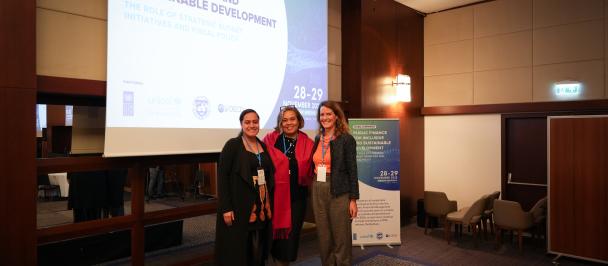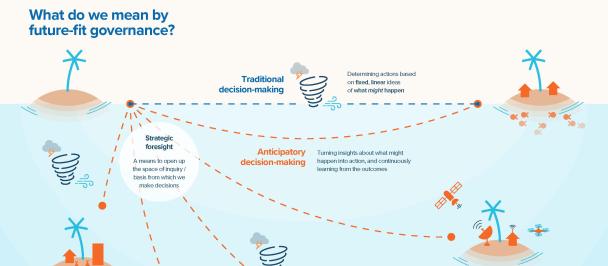Photo: Rob Rickman
Pacific Island countries have in recent years worked with donors and country partners to use digital technologies to facilitate effective public finance management, tackling issues in the following areas: 1) aligning budget with policy priorities, 2) improving tax compliance, 3) allocating public spending more efficiently and effectively and 4) reducing corruption.
In the first part of this blog series, we discussed how digital solutions could help civil society engage in the budget process.
In this second part of the series, we would like to share three valuable insights we picked along the way thanks to our on-going work on Public Finance oversight funded by the European Union and which reflect the current state of digitalization in the public finance sector in the Pacific countries, especially in Fiji, Solomon Islands, Vanuatu, Samoa and Tonga.
Budget consultations and reviews: hybrid solutions with a pinch of social media
We often heard that talking about public finance is a bit intimidating. Yet the budget is essentially a citizens’ budget setting a plan for the nation’s money. All the citizens and civil society organizations we’ve spoken to have an opinion about where public investments would make a difference.
Budget consultations are held by governments during the planning and drafting phase. However, not all Pacific countries have annual consultations on the budget and in many countries they are conducted through line ministries who have individual approaches to consultation strategies. In most countries, public consultations use a mixed strategy of face to face and online government official websites where citizens can access information regarding government budget, programs, and policies. Only a couple of countries use social media to engage with their citizens during budget consultations. Some countries, such as Fiji and Solomon Islands livestreamed their budget strategy events on Facebook.
The need for mature and accessible solutions – paired with offline support
There is not much space for experimentation or trial and error especially when dealing with governmental information or financial management systems. The adoption of digital for public finance requires maturity of the digital application. As there is little support in Information Technology available in the Pacific countries, the system has to be simple to maintain and mature enough in order to avoid hiccups when using the system. Local IT capacity needs to come on board as this is the only effective way to quickly address problems. If the system fails, the trust in the system diminishes and the government will stop using the system.
One key lesson learned from our review is that there is almost no unique system used among PICS but we often find systems or software used in multiple countries. This is mostly explained by external donors and partners’ tendency to pull resources and develop tools for several countries through one initiative. For example, the Financial Management Information System (FMIS), Automated System Custom Data (ASYCUDA) by UNCTAD and Automated Transfer System (ATM) by the World Bank, are used in multiple countries in the Pacific. Furthermore, generally speaking, a lot of ICT and information systems development are developed abroad and driven by external partners or donors.
Finally, taking into account the internet access in the Pacific, public finance digital services should cope with no or limited internet connection in certain countries or areas. Any initiatives should take into account offline possibilities to access government service, in order to complement the online system.
Persistent challenges and opportunities
Infrastructure is costly in Pacific Islands states and the provision of broadband access is relatively complex and expensive to implement. Many countries still rely on a single cable - which can be a major challenge as Tonga recently experienced when a major volcanic eruption cut the country from the internet. The United Nations Economic and Social Commission for Asia and the Pacific (UNESCAP) further estimates that accessing the world wide web is only affordable in Tonga and Fiji - everywhere else in the Pacific accessing mobile broadband represents more than five percent of gross national income per capita.
These shared challenges pile up on other sources of inequalities - the different level of development and access to communication technology between main and outer islands, the intergenerational divide and the difficulty for already marginalised groups to develop ICT capacity and experience. The digital world often replicates if not amplifies existing inequalities.
Yet if done intentionally, digitalisation and digital tools can help bridge these gaps. By enabling voice and transparency of the budget process as seen in our earlier piece. Or by ensuring that parliaments continue to function and provide essential oversight of response and recovery measures during crisis as demonstrated across the region with the support of the UNDP Parliamentary support portfolio.
So where do we go from here?
From our side, we take these lessons learned as a stepping stone. Digitalisation is not really a choice anymore and we need to ensure that the Pacific does not fall behind on the opportunities that digital tools open up. The next phase of our project, thanks to the generous support of the European Union, will explore more tools and avenues to make sure digital rhymes with inclusive, sustainable and effective public finance.

 Locations
Locations





